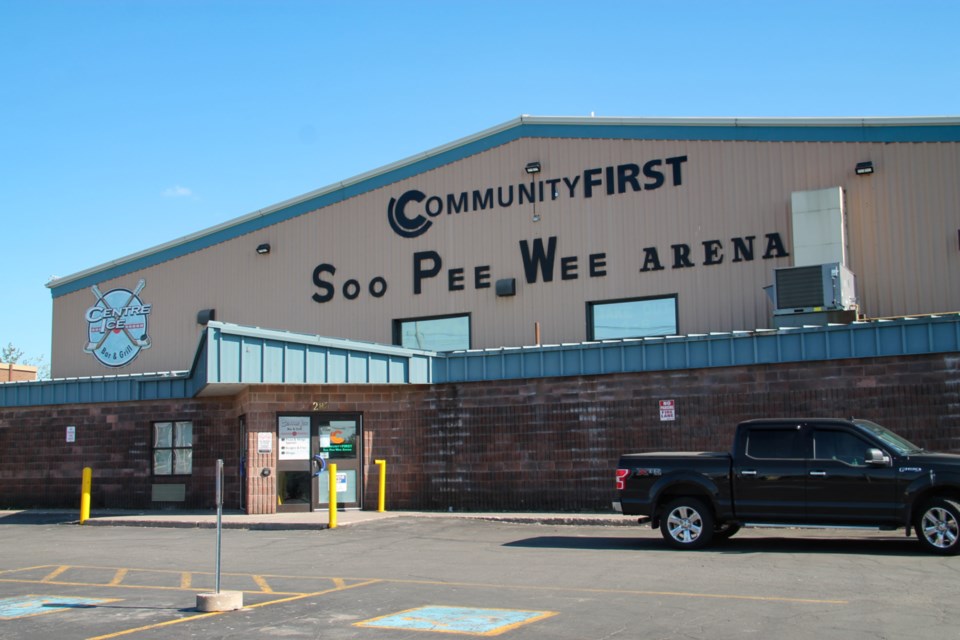An attempt to cut off YNCU Soo Pee Wee Arena from city funding was thwarted this week after strong opposition was expressed by Malcolm White, the city's chief administrative officer.
The 56-year-old arena at 285 Northern Ave. East is operated as a registered charity.
It's an 185-foot by 85-foot rink that can handle 1,000 spectators, accompanied by an on-site pro shop (purportedly the smallest pro shop in northern Ontario) as well as a full-service restaurant (Centre Ice Bar and Grill), concessions and a skate-sharpening service.
It hosts the 1,000-member Soo Pee Wee Hockey League, in addition to men’s and women’s recreational hockey, figure skating, power skating, adult and youth hockey tournaments and the annual Campbell Amusements spring midway.
Players and coaches who started at Soo Pee Wee have included Ron Francis, Tyler Kennedy, Paul DiPietro, Marty Turco, Rico Fata and Paul Maurice.
Major benefactors over the years have included Marty Turco, the Mert Wright Family, Dr. Lou Lukenda Charitable Foundation, Soo Hockey Club, Joe Maione and CTV.
At a budget meeting earlier this week, Ward 5 Coun. Corey Gardi and Ward 2's Lisa Vezeau-Allen were itching to eliminate a $23,974 municipal grant to the arena, an amount representing property taxes payable on the site.
Gardi said the city needed to do everything it could to keep the tax levy down.
"It's $24,000," Gardi said. "We just spent $30 million on our own arena. I'm saying that we do not fund the Pee Wee with $23,974. This Pee Wee can generate revenue to make up for that shortfall."
"They do an enormous amount of fundraising," said Vezeau-Allen.
"The parking lot's already packed. They have a good revenue stream so we had to look for efficiencies and I don't think we should be supporting the Pee Wee to this amount."
However CAO White begged to differ from the two councillors, offering a lesson on the arena's grassroots history.
"Mr. Mayor, members of council, I need to speak out against this motion," White said.
"It's based on the history behind the Pee Wee and why it came into being and what it's done for the community over its time.
"Essentially, the Pee Wee Arena was built because the city would not build an additional rink to meet the demand at the time," White said.
"Pee Wee has also provided the programming that otherwise the city would have had to run at the time for youth hockey."
"From the staff point of view, we think that this is a worthwhile investment. It covers their property taxes, which is the reason for the funding," White said.
Mayor Shoemaker said he had some difficulty with what Gardi and Vezeau-Allen were proposing.
"I think that 23 grand a year gets us a sixth or seventh hockey pad," the mayor said.
"They could maybe find an additional $23,000 in fundraising, although I suspect that will be difficult."
The 56-year-old building requires ongoing maintenance, Shoemaker said, adding: "I think for $23,000 we get off pretty cheap, to be honest."
"If we had to build another rink... It'd be a lot more than $23,000 a year so I don't support this."
The Soo Pee Wee official website provides additional background on the arena's history:
"The YNCU Soo Pee Wee Arena began as the dream of several community members who saw the need for another indoor ice arena in Sault Ste. Marie. These visionaries secured community support, funding and volunteer material and labour to construct the facility in 1965 which continues to play an important role in our community today."
"The 1960s was an era of great change in our ways of thinking and behaving, and one of the fastest growing organizations in our city was the Soo Pee Wee Hockey League.
"We started out by renting ice time at the Memorial Gardens to teach basic hockey and skating skills. With the scarcity of time slots and the rapid increase in applicants, the organization was forced to move to the Central Park rink to handle the growing number of childen.
"The problems of unreliable weather and time limitations to scheduling and needed expansion were threatening collapse of the organization. A solution was desperately needed.
"A handful of individuals, with a vision about an arena for young people, held regular meetings in King Edward School, and later King George School, in order to plan how to achieve this objective. Others promised material, all types of heavy and light equipment, professional advice and skills and just plain support in any way that was required.
"Bank loans were signed by our supporters and land was purchased from Lorne Palmer of Soo Dairies. With the prospect of a real arena in sight, a directorate of ten was selected to manage the corporation.
Volunteer labour formed a major part of the construction force and was entirely responsible for the operation of the arena during its initial year of operation. The first hired employee was engaged in October 1968 and in November 1972, the first full time manager was hired."
Councillors voting this week to cut off municipal funding to Soo Pee Wee Arena were:
- Ward 2 Coun. Lisa Vezeau-Allen
- Ward 3 Coun. Ron Zagordo
- Ward 5 Coun. Corey Gardi
- Ward 5 Coun. Matthew Scott
Those four councillors lost, however, to these seven council members who voted against the Gardi/Vezeau Allen motion:
- Mayor Shoemaker
- Ward 1 Coun. Sandra Hollingsworth
- Ward 1 Coun. Sonny Spina
- Ward 2 Coun. Luke Dufour
- Ward 3 Coun. Angela Caputo
- Ward 4 Coun. Marchy Bruni
- Ward 4 Coun. Stephan Kinach
